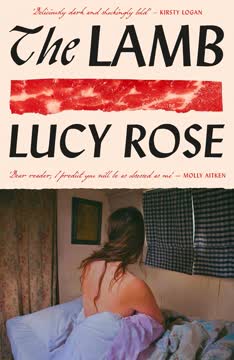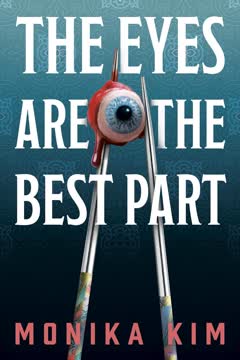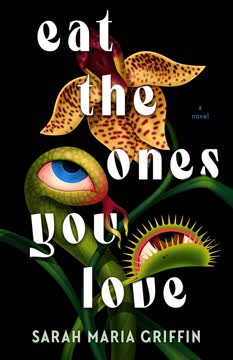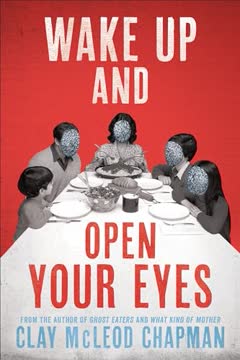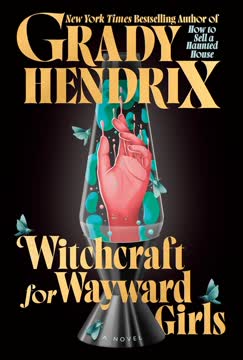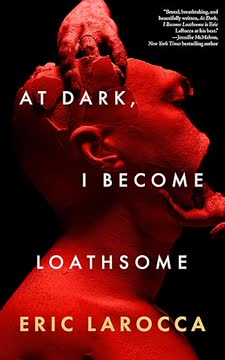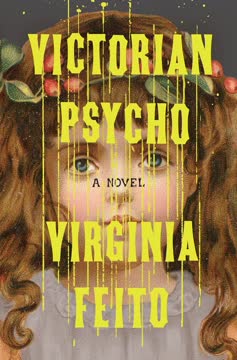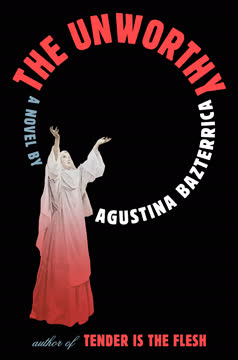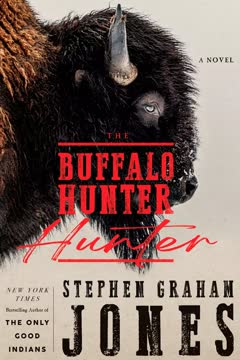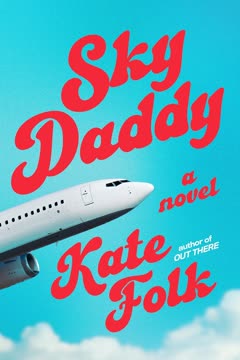Plot Summary
Severed Fingers in the Drain
On her fourth birthday, Margot, the narrator, finds six severed fingers in the family's grimy bathtub. The fingers are remnants of "strays"—unfortunate travelers lured to the isolated homestead by her mother, Ruth. Margot's world is one of rot and ritual, where the line between nurture and predation is blurred. Her mother, both caretaker and predator, teaches her that a good meal must be content before it is consumed, and that love and violence are intertwined. The house is a cocoon of secrets, where the past is buried in both literal and figurative ways, and the absence of Margot's father is a wound that never quite heals.
Rituals of Hunger
Margot and Ruth survive by luring strays—lost travelers, hikers, and the unlucky—into their home, drugging them with hemlock, and consuming them. Ruth insists that the strays must feel loved before they are killed, believing that contentment sweetens the meat. Meals are both celebration and sacrament, with Margot learning to savor the taste of human flesh and the rituals that surround it. The homestead is a place of scarcity, where hunger is both physical and emotional, and where the act of eating is bound up with longing, power, and the desperate need for connection.
Strays at the Door
The arrival of new strays is both a blessing and a threat. Ruth is adept at reading the souls of those who stumble upon their home, knowing which ones will be easy to lure and which require more coaxing. Margot assists in the rituals, learning to manipulate, to comfort, and to clean up after the violence. The house is filled with the ghosts of those who have come before, their belongings buried in the garden, their memories haunting the rooms. The outside world is distant, glimpsed only through the rare passing of headlights or the stories Ruth tells to keep Margot close.
The Gamekeeper's Secret
Ruth's affair with the local gamekeeper is a rare intrusion of adult desire into Margot's world. The gamekeeper, married and oblivious, becomes both lover and eventual prey. His daughter, Abbie, is Margot's classmate, and the tangled web of relationships underscores the novel's central theme: the impossibility of true intimacy in a world built on secrets and consumption. Ruth's hunger is insatiable, her love fickle, and her need for control absolute. The gamekeeper's fate is sealed by his inability to see Ruth for what she truly is—a predator in the guise of a lover.
Lessons in Love and Teeth
Margot's education is as much about survival as it is about affection. Ruth teaches her to value her own beauty, to use her smile as a weapon, and to accept violence as a form of love. The rituals of bathing, grooming, and storytelling are laced with menace, and Margot's longing for approval is met with both tenderness and cruelty. The boundaries between mother and daughter, predator and prey, are porous, and Margot's sense of self is shaped by the constant threat of abandonment and the ever-present possibility of being consumed.
The Hexes We Make
Margot learns to create hexes—small talismans made from bones, shells, and herbs—to protect the homestead and keep secrets buried. These objects are both magical and mundane, serving as repositories for wishes, memories, and guilt. The act of making hexes is a way for Margot to assert control over her world, to channel her fears and desires into something tangible. The garden is filled with the detritus of past victims, their belongings hidden beneath the earth, their presence lingering in the air.
The Arrival of Eden
Eden, a mysterious woman, arrives at the homestead during a snowstorm. Unlike previous strays, she is self-possessed, enigmatic, and quickly becomes an object of fascination for both Ruth and Margot. Eden resists the usual rituals, refusing to be drugged or seduced, and instead insinuates herself into the family, cooking, cleaning, and telling stories. Her presence destabilizes the fragile balance of power, awakening new desires in Ruth and offering Margot a glimpse of a different kind of love—one that is both nurturing and dangerous.
A Family of Predators
As Eden becomes more entrenched in the household, the dynamic shifts. Ruth and Eden form a passionate, consuming bond, leaving Margot increasingly isolated. The rituals of hunting and feasting continue, but the focus turns inward, with the three women circling each other in a dance of desire, jealousy, and need. Margot's longing for her mother's love is complicated by her fascination with Eden, and the boundaries between victim and accomplice blur. The homestead becomes a crucible, where love and violence are indistinguishable, and where the only certainty is that someone will be consumed.
Abbie's Ribbon
At school, Margot forms a tentative friendship with Abbie, the gamekeeper's daughter. Their bond is marked by shared loneliness and a mutual sense of being outsiders. Margot's guilt over her role in the gamekeeper's death is compounded by her desire for Abbie's affection, and the green ribbon Abbie wears becomes a symbol of innocence, longing, and the possibility of redemption. The outside world encroaches in the form of teachers, bullies, and the ever-watchful bus driver, but Margot's true struggle is internal—a battle between her hunger for love and her fear of becoming a monster.
The Trap and the Lamb
Margot is tasked with bringing home her own stray, a rite of passage that will cement her place in the family. She sets traps, both literal and figurative, and lures a wounded woman from the woods back to the homestead. The act is both empowering and devastating, marking Margot's transition from child to predator. The rituals of preparation, killing, and feasting are repeated, but the satisfaction is fleeting. Margot is haunted by the knowledge that she is both victim and perpetrator, and that the cycle of violence is inescapable.
The Taste of Regret
As Ruth and Eden's relationship intensifies, Margot becomes increasingly rebellious, sabotaging the burial sites of past victims and refusing to eat. The homestead, once a place of safety, becomes a prison, and Margot's attempts to assert her autonomy are met with escalating violence. The boundaries between love and hate, nurture and destruction, are obliterated, and Margot is forced to confront the reality that she is expendable—that in a family of predators, even the lamb can be slaughtered.
The Last Supper
Margot's fate is sealed as Ruth and Eden prepare to consume her. The rituals of bathing, grooming, and storytelling take on a new urgency, and the kitchen is transformed into an abattoir. Margot, weakened by poison and despair, reflects on her life, her relationships, and the legacy of violence that has shaped her. The final meal is both a celebration and a funeral, a moment of intimacy and annihilation. Margot's last act is to poison the stock with hemlock, ensuring that her death will not go unpunished.
The Pie and the Poison
Margot is killed, butchered, and baked into a pie by Ruth and Eden, who feast on her flesh in a grotesque parody of communion. The hemlock-laced stock takes its toll, and the two women die at the table, their bodies left to rot in the once-sacred space of the homestead. The cycle of violence is complete, and the family is destroyed by its own hunger. Margot's spirit lingers, observing the aftermath with a mixture of sorrow and vindication.
The End of the Homestead
The homestead falls into ruin, its secrets unearthed only when the bus driver, Steve, comes searching for Margot. The discovery of the bodies, the evidence of cannibalism, and the traces of past victims are met with shock and horror, but the world quickly moves on. The house, once a place of ritual and power, becomes a tomb, its history swallowed by time and neglect. Margot's story is reduced to a cautionary tale, a footnote in the annals of rural horror.
Ghosts in the Bathtub
Margot's spirit remains, trapped in the decaying homestead, reliving the rituals of her childhood and the violence that defined her life. The severed fingers, the taste of mould, the ghosts of strays—all linger in the air, refusing to be forgotten. The house is both prison and sanctuary, a place where the past is never truly buried and where the cycle of hunger and loss continues, even in death.
The Bus Driver's Lament
Steve, the bus driver, is the only outsider to truly notice Margot, to sense the darkness lurking beneath the surface of her life. His attempts to intervene are too little, too late, and his discovery of the aftermath is met with helpless grief. The world is indifferent to the suffering of the vulnerable, and the systems meant to protect children are easily circumvented by those who know how to hide. Steve's sorrow is a quiet counterpoint to the violence of the homestead, a reminder that empathy is not always enough.
Becoming the Monster
Margot's journey is one of transformation—from innocent child to complicit predator, from victim to avenger, from lamb to wolf. The novel interrogates the nature of evil, the legacy of trauma, and the ways in which violence is passed down through generations. Margot's final act is both a rejection of her inheritance and an acceptance of her own monstrosity, a recognition that survival sometimes requires becoming the very thing one fears.
The World Forgets
In the end, the world moves on. The homestead is reclaimed by nature, the stories of its inhabitants fading into legend. Margot, Ruth, and Eden become ghosts, their lives reduced to whispers and warnings. The cycle of violence is both broken and perpetuated, as new strays wander the roads, and new families form in the shadow of old wounds. The novel closes with a meditation on memory, loss, and the impossibility of true escape.
Characters
Margot
Margot is the narrator and emotional core of the novel—a girl raised in isolation, taught to equate love with violence and survival with complicity. Her relationship with her mother is fraught with both tenderness and terror, and her longing for connection is constantly thwarted by the realities of her world. Margot is both victim and perpetrator, shaped by trauma and desperate for approval. Her psychological development is marked by a growing awareness of her own monstrosity, her capacity for both empathy and cruelty, and her ultimate rejection of the cycle that has defined her life.
Ruth (Mama)
Ruth is a complex figure—both nurturing and monstrous, loving and abusive. Her hunger is insatiable, her need for control absolute, and her capacity for self-delusion profound. Ruth's relationships are transactional, her love conditional, and her violence rationalized as necessity. She is haunted by her own past, by the absence of Margot's father, and by the knowledge that she can never truly be satisfied. Ruth's psychological profile is one of narcissism, dependency, and a desperate need to be seen as both victim and victor.
Eden
Eden is the stranger who disrupts the family's fragile equilibrium. She is both victim and manipulator, seducing Ruth and Margot with promises of love, safety, and a new way of being. Eden's past is shrouded in mystery, her motives ambiguous, and her presence both comforting and threatening. She becomes Ruth's lover and Margot's rival, ultimately colluding in Margot's destruction. Eden's psychological complexity lies in her ability to adapt, to survive, and to exploit the vulnerabilities of those around her.
Abbie
Abbie is the daughter of the gamekeeper and Margot's only real friend. She represents the possibility of a different life—a world of innocence, affection, and mutual understanding. Abbie's presence is a source of both comfort and guilt for Margot, who is complicit in the death of Abbie's father. Abbie's grief, resilience, and longing for connection mirror Margot's own, and her fate is a reminder of the collateral damage wrought by cycles of violence.
The Gamekeeper
The gamekeeper is Ruth's lover and Abbie's father, a man whose desires and weaknesses make him both complicit and expendable. His affair with Ruth is marked by secrecy, betrayal, and a fatal blindness to the danger he is in. The gamekeeper's death is both a turning point and a symbol of the novel's central themes: the impossibility of true intimacy, the dangers of desire, and the inevitability of betrayal.
Steve (The Bus Driver)
Steve is the only adult outside the family who senses that something is wrong. His kindness to Margot is a rare source of comfort, but his inability to intervene effectively underscores the novel's bleak view of institutional failure. Steve's grief at the end of the novel is a quiet testament to the limits of empathy and the persistence of suffering.
Papa
Margot's father is a ghostly presence, his absence shaping the dynamics of the homestead. He is remembered through fragments—smells, textures, and the stories Ruth tells. His fate is ultimately revealed to be as grim as that of any stray, and his legacy is one of abandonment, disappointment, and the perpetuation of trauma.
The Strays
The strays are the nameless, faceless victims who pass through the homestead, their belongings buried in the garden, their bodies consumed and forgotten. They are both literal and symbolic, representing the expendability of the vulnerable and the ease with which suffering is erased.
The Schoolchildren
The children at Margot's school are both tormentors and mirrors, their cruelty and indifference echoing the dynamics of the homestead. They are "changelings," caught between childhood and adulthood, innocence and monstrosity.
Roz
Roz, the school secretary, is a rare figure of genuine care and competence. Her small acts of kindness—providing pads, chocolate, and comfort—stand in stark contrast to the neglect and violence of Margot's home life.
Plot Devices
Cannibalism as Familial Bond
The central plot device is the ritualized consumption of strays, which serves as both a literal and metaphorical expression of the family's dynamics. Eating is an act of love, violence, and control, binding the characters together in a cycle of need and destruction. The act of consuming others is both a means of survival and a way of asserting dominance, and it is inextricably linked to the characters' understanding of intimacy, identity, and power.
The Isolated Homestead
The remote, decaying house is both sanctuary and prison, a place where secrets are kept and violence is normalized. The setting amplifies the characters' isolation, their dependence on one another, and their inability to escape the cycles of trauma that define their lives. The house is filled with hidden rooms, buried belongings, and the ghosts of past victims, serving as a constant reminder of the inescapability of the past.
The Hexes and Rituals
Margot's creation of hexes and the family's adherence to rituals are attempts to impose order on a chaotic world. These practices are both coping mechanisms and expressions of agency, allowing the characters to channel their fears and desires into something tangible. The rituals of bathing, grooming, and storytelling are as much about control as they are about comfort.
Foreshadowing and Circular Structure
The novel is structured around cycles—of hunger, violence, and longing. Early events foreshadow later ones, and the repetition of rituals, meals, and betrayals creates a sense of inevitability. The story is both linear and circular, with the past constantly intruding on the present and the future always haunted by what has come before.
Unreliable Narration and Fragmented Memory
Margot's narration is marked by gaps, omissions, and contradictions, reflecting the ways in which trauma distorts memory and perception. The truth is always elusive, and the reader is forced to piece together the story from fragments, hints, and the unreliable testimony of a child raised in darkness.
Analysis
Lucy Rose's The Lamb is a gothic horror novel that uses the framework of cannibalism and rural isolation to explore the psychological inheritance of trauma, the complexities of mother-daughter relationships, and the ways in which love and violence become indistinguishable in the crucible of family. The novel interrogates the myth of maternal perfection, exposing the ways in which women are both victims and perpetrators of generational harm. Through its lush, unsettling prose and its relentless focus on the rituals of consumption, the book asks what it means to be loved, to be seen, and to survive in a world where the boundaries between nurture and predation are always shifting. Ultimately, The Lamb is a meditation on the impossibility of true escape from the cycles that shape us, the persistence of memory and guilt, and the haunting knowledge that, in the end, the world is quick to forget the suffering of its most vulnerable.
The novel's central characters, Margot and Ruth, embody the complex dynamics of a relationship warped by isolation and necessity. The homestead serves as both a physical and psychological prison, amplifying the characters' dependence on one another and their inability to break free from destructive patterns. The arrival of Eden disrupts this delicate balance, introducing new possibilities and dangers into the family's closed system.
The use of cannibalism as a metaphor for familial bonds is particularly potent, highlighting the ways in which love and violence can become intertwined in abusive relationships. The ritualized consumption of strays serves as a grotesque parody of communion, binding the family together through shared guilt and necessity. This theme is further explored through the hexes and rituals that Margot creates, which represent attempts to impose order and control on a chaotic and threatening world.
The novel's structure, with its foreshadowing and circular patterns, reinforces the sense of inevitability and the inescapability of the past. Margot's unreliable narration adds layers of complexity to the story, forcing readers to question their own understanding of events and the nature of truth in the face of trauma.
Secondary characters like Abbie, the Gamekeeper, and Steve the bus driver provide glimpses of the world beyond the homestead, serving as reminders of what Margot has lost and what she might have become under different circumstances. The novel's ending, with its bleak acknowledgment of the world's indifference to individual suffering, leaves readers with a sense of unresolved tension and lingering horror.
In conclusion, The Lamb is a haunting exploration of the ways in which trauma shapes identity, the power dynamics within families, and the thin line between love and violence. Through its vivid characters and unsettling imagery, the novel forces readers to confront uncomfortable truths about the nature of survival and the lasting impact of childhood experiences.
Last updated:
FAQ
Synopsis & Basic Details
What is The Lamb about?
- A Dark Coming-of-Age: The Lamb follows Margot, a young girl raised in an isolated homestead by her mother, Ruth, where the family survives by luring "strays"—lost travelers—into their home, consuming them in ritualistic feasts. The story explores Margot's unique upbringing, her struggle to reconcile her inherited predatory nature with a burgeoning sense of empathy, and the complex, often violent, dynamics of her relationship with her mother.
- Unsettling Familial Bonds: The narrative delves into the twisted concept of love and survival within this unconventional family, where acts of violence are intertwined with expressions of affection. Margot learns to navigate a world where hunger is both literal and emotional, and where the line between nurture and consumption is constantly blurred, leading to a chilling exploration of identity and belonging.
- A World of Secrets: As a mysterious woman named Eden enters their lives, the fragile balance of the homestead is disrupted, forcing Margot to confront deeper truths about her family's past, her own desires, and the inevitable consequences of their hidden existence. The novel is a gothic horror tale steeped in psychological tension and unsettling domesticity.
Why should I read The Lamb?
- Visceral Sensory Experience: Lucy Rose's prose is deeply immersive, drawing readers into Margot's world through vivid sensory details—the smell of mould, the taste of blood, the feel of mud and cold. This creates an unsettling, almost tactile reading experience that lingers long after the final page, making the horror feel intimately real.
- Complex Psychological Depth: Beyond the shocking premise, the novel offers a profound psychological exploration of trauma, inherited violence, and the formation of identity. Readers will be captivated by Margot's internal conflict, Ruth's desperate hunger, and Eden's enigmatic influence, prompting deep reflection on human nature and the capacity for both cruelty and connection.
- Subversive Gothic Themes: The Lamb masterfully subverts traditional gothic tropes, reimagining the isolated house, the monstrous feminine, and the innocent child through a modern, visceral lens. It challenges conventional notions of family, love, and morality, offering a fresh and disturbing take on the genre that will appeal to fans of dark, character-driven fiction.
What is the background of The Lamb?
- Rural Isolation & Primal Survival: The story is set in a remote, unnamed rural area, likely the fells of Cumbria given references to the "Gelt or the Eden" rivers (Chapter 6) and the "Pennines in the Cumbrian regions" (Chapter 23). This geographical isolation is crucial, cutting the characters off from conventional society and forcing them into a primal mode of survival where traditional morality is irrelevant.
- Psychological & Emotional Landscape: The "background" is less about historical events and more about the psychological and emotional inheritance of trauma. The characters' actions are deeply rooted in their past experiences of abandonment, unfulfilled love, and a desperate need for belonging, creating a cycle of violence that perpetuates itself through generations.
- Subversion of Domesticity: The novel takes the familiar setting of a "pebble-dashed cottage" (Chapter 2) and subverts it, transforming a symbol of domestic comfort into a site of horror and consumption. This contrast highlights the unsettling nature of the family's existence, where everyday objects and routines are imbued with sinister meaning.
What are the most memorable quotes in The Lamb?
- "We are what we eat, Mama always said." (Chapter 1): This quote encapsulates the novel's central theme of cannibalism as a familial bond as a literal and metaphorical act of absorption and identity. It highlights Ruth's twisted philosophy, suggesting that consuming others allows them to internalize their qualities, blurring the lines between predator and prey, and shaping Margot's understanding of self.
- "The devil looks as ordinary as you and me." (Chapter 33): Spoken by Mama to Margot, this line is a chilling commentary on the banality of evil and the deceptive nature of appearances. It underscores the novel's exploration of how monstrous acts can be committed by seemingly ordinary people, challenging the reader's preconceptions about what evil truly looks like.
- "Being a mama is a promise you make to be perfect and make no mistakes. And to put yourself second until you die. It mutates into this horrible burden. A weight you have to carry forever." (Chapter 74): This quote reveals Ruth's deep-seated resentment and the immense pressure she feels as a mother, offering a rare glimpse into her vulnerability. It explains her destructive behavior as a desperate attempt to escape the perceived "burden" of motherhood, connecting her actions to a profound sense of entrapment and self-loathing.
What writing style, narrative choices, and literary techniques does Lucy Rose use?
- First-Person, Unreliable Narration: The story is told through Margot's first-person perspective, which is inherently unreliable due to her traumatic upbringing and distorted understanding of the world. This narrative choice forces the reader to constantly question what is real, what is imagined, and how Margot's perception shapes the events, deepening the psychological horror.
- Sensory-Rich, Visceral Prose: Rose employs highly descriptive and sensory language, immersing the reader in Margot's disturbing reality. The text is filled with vivid descriptions of smells ("musty brambles," "thick tobacco smell," "iron smell"), tastes ("earthy must," "metal and musty," "sour and salty"), and tactile sensations ("bedding tickled," "cold blistered our skin," "mud squelched"), making the grotesque feel intimately real.
- Symbolism and Motif Repetition: The novel is rich with recurring symbols and motifs, such as the "strays," the "hexes," the "mould," and various animal imagery (lamb, rabbit, wolf). These elements are woven throughout the narrative, adding layers of meaning and reinforcing the cyclical nature of violence, hunger, and the characters' psychological states.
Hidden Details & Subtle Connections
What are some minor details that add significant meaning?
- The Ever-Present Mould: The black mould in the bathroom (Chapter 1, 25, 62, 81) is more than just a sign of neglect; it symbolizes the pervasive decay and corruption within the homestead and Margot's own psyche. Her act of licking it (Chapter 1, 62) signifies her acceptance, and even embrace, of this internal and external rot, foreshadowing her eventual descent into the family's monstrous ways.
- The Bus Driver's Illegible Tattoos: When Margot observes the bus driver's "fuzzy. Old. Illegible" tattoos (Chapter 52), it subtly hints at the forgotten histories and unreadable complexities of ordinary people. Unlike the strays whose stories are consumed, the bus driver represents a world of unwritten narratives and quiet lives, making his eventual discovery of the homestead's horrors even more poignant.
- Eden's "Perfect" Hair and Teeth: Eden's initial description emphasizes her "perfect hair" and "white and straight" teeth (Chapter 11), contrasting sharply with Mama's "crooked teeth" (Chapter 5). This detail subtly positions Eden as an idealized, almost unnatural, figure of perfection, hinting at her manipulative nature and her ability to present a polished facade that draws Mama in, promising a "cleaner" form of consumption.
What are some subtle foreshadowing and callbacks?
- The "Ammonite Fossil" Metaphor: Mama tells Margot she is her "sweet ammonite fossil" and "only hers to unearth" (Chapter 5). This seemingly tender metaphor subtly foreshadows Margot's eventual fate, where she is literally "unearthed" and consumed, becoming a part of Mama and Eden, a "fossil" of their shared history. It also hints at Mama's possessive and consuming love.
- The Gamekeeper's Boots as a Lingering Presence: Margot's decision to hide the gamekeeper's boots instead of burying them (Chapter 22) is a subtle act of rebellion and a callback to his earlier presence. These boots, "used. Lived in," become a tangible link to the outside world and to Abbie, symbolizing Margot's internal conflict and her desire to preserve a piece of humanity amidst the horror. Their eventual re-exhumation by Eden (Chapter 61) directly leads to Margot's capture.
- The "Rabbit Woman" Story's Evolving Versions: Eden's retelling of the "rabbit woman" story (Chapter 18) initially presents a tale of transformation and survival, but her later, darker version (Chapter 45) reveals the woman's vengeful and predatory nature. This evolution of the story subtly foreshadows Eden's own true intentions and the escalating darkness within the homestead, mirroring the characters' own descent.
What are some unexpected character connections?
- Margot's Connection to the Bus Driver's Grief: The bus driver's confession about losing his own father and feeling "robbed of something" (Chapter 34) creates an unexpected emotional parallel with Margot's own unspoken grief for Papa. This shared experience of loss, though vastly different in its origins, forms a quiet, empathetic bond between them, making his eventual discovery of her fate even more tragic.
- Eden's Shared Trauma with Mama's First Stray: Eden's confession about killing her own mother during childbirth (Chapter 38) and her subsequent consumption of her baby, Bobby (Chapter 57), creates a chilling parallel with Mama's first stray—the woman whose skull Mama cracked open and whose brain she tasted (Chapter 6). This shared history of primal, consuming violence forms the deep, unspoken bond between Mama and Eden, making them "kindred" (Chapter 13) in their monstrosity.
- Abbie's Unwitting Connection to the Homestead's Secrets: Abbie's innocent questions about her father's disappearance and her belief that "the ground has eaten him up" (Chapter 24) create a direct, yet unknown, connection to the homestead's secrets. Her grief and search for answers unknowingly mirror the literal fate of her father, whose remains are buried in the garden, highlighting the tragic irony of Margot's friendship with her.
Who are the most significant supporting characters?
- Steve, The Bus Driver: Steve is crucial as the sole external moral compass and a symbol of the world's quiet empathy. His consistent kindness, genuine concern for Margot's well-being, and eventual discovery of the homestead's horrors (Chapter 80) serve as a stark contrast to the family's depravity, highlighting the limits of intervention and the tragedy of unnoticed suffering.
- Abbie, The Gamekeeper's Daughter: Abbie represents Margot's last tether to normalcy and innocence. Her friendship offers Margot a glimpse of genuine connection and a moral dilemma, forcing her to confront the consequences of her family's actions. Abbie's persistent grief for her father (Chapter 24) also serves as a constant, haunting reminder of the victims' humanity.
- Papa, The Absent Figure: Though largely absent, Papa presence is profoundly significant. His memory, distorted by Ruth's narratives and Margot's fragmented recollections, shapes Margot's identity and her understanding of love and abandonment. His ultimate fate, revealed to be consumption by Ruth (Chapter 54), is a pivotal moment that shatters Margot's last illusions about her family and herself.
Psychological, Emotional, & Relational Analysis
What are some unspoken motivations of the characters?
- Ruth's Desperate Need for Control and Validation: Beyond hunger, Ruth's deepest motivation is a desperate need for control and validation, stemming from her own past experiences of being "expected to be perfect and quiet. Compliant" (Chapter 33). Her consumption of strays and her possessive love for Eden are attempts to fill an emotional void and assert dominance, ensuring she is never abandoned or unseen again.
- Eden's Quest for a "Home" and Acceptance: Eden's motivation, subtly revealed through her past (Chapter 57), is a profound longing for a place where she can be her true, monstrous self without judgment. Her desire to "take root in our homestead" (Chapter 11) and her promise to "never leave you" (Chapter 31) to Mama stem from her own history of being an outcast and a "runner," seeking a family that accepts her inherent nature.
- Margot's Search for Unconditional Love and Identity: Margot's unspoken motivation is a yearning for unconditional love and a stable sense of self, constantly oscillating between her inherited predatory instincts and a nascent empathy. Her attempts to connect with Abbie and the bus driver, and her internal struggle with the "taste of regret" (Chapter 41), reveal a child desperately trying to define herself outside the monstrous framework of her upbringing.
What psychological complexities do the characters exhibit?
- Ruth's Narcissistic Projection: Ruth exhibits narcissistic tendencies, projecting her own unfulfilled desires and insecurities onto Margot and her relationships. Her declaration, "I didn't want to carry a child! I never wanted to be a mama" (Chapter 71), reveals a deep-seated resentment towards motherhood, which she perceives as a "burden," explaining her transactional and often cruel treatment of Margot.
- Eden's Calculated Empathy and Manipulation: Eden's psychological complexity lies in her ability to display convincing empathy while simultaneously manipulating those around her. Her gentle words and comforting gestures (e.g., "I'm only looking after you, Little One," Chapter 27) mask a cold, calculating nature, as evidenced by her past actions and her strategic suggestions for luring strays (Chapter 32).
- Margot's Dissociation and Moral Conflict: Margot frequently dissociates from the horrific reality of her life, describing events with a detached, almost clinical tone (e.g., "I didn't recognise the stray as the woman from the woods anymore. There was a person there, but all I saw was meat," Chapter 37). This dissociation is a coping mechanism, but it also highlights her profound moral conflict as she grapples with her inherited nature versus her growing conscience.
What are the major emotional turning points?
- Margot's First Taste of Papa's Flesh: The revelation that Margot consumed her own father (Chapter 54) is a devastating emotional turning point. This shatters her fragmented memories of him and forces her to confront the full extent of her family's depravity and her own complicity, leading to intense physical and emotional revulsion ("I vomited. And vomited again.").
- Ruth's Confession of Not Loving Margot: Mama's whispered confession, "I'm wondering if it's quite possible I don't love you the same anymore" (Chapter 57), is a brutal emotional blow for Margot. This moment confirms Margot's deepest fear of abandonment and rejection, solidifying her decision to act against her mother and Eden.
- Eden's Story of Bobby: Eden's chilling confession of consuming her own baby, Bobby (Chapter 57), is a major emotional turning point for Margot. It reveals the depth of Eden's own trauma and monstrousness, but also her capacity for a twisted form of "love" and possession, making Margot realize the true nature of the "safety" Eden offers.
How do relationship dynamics evolve?
- Margot and Ruth: From Dependent to Antagonistic: The relationship between Margot and Ruth evolves from a deeply dependent, albeit abusive, bond to one of overt antagonism. Initially, Margot seeks Ruth's approval and love, but as Ruth's focus shifts to Eden and her true nature is revealed, Margot's loyalty curdles into hatred and a desire for revenge.
- Ruth and Eden: From Infatuation to Consuming Codependency: Ruth's relationship with Eden quickly escalates from infatuation to a consuming, almost symbiotic codependency. Eden fills Ruth's "empty belly" (Chapter 46) in ways no one else could, leading Ruth to abandon her previous caution and focus solely on Eden, even at Margot's expense. Their love becomes a shared monstrousness.
- Margot and Abbie: From Friendship to Symbolic Sacrifice: Margot's friendship with Abbie, initially a source of comfort and a connection to normalcy, transforms into a symbolic sacrifice. Margot's act of swallowing Abbie's hair (Chapter 35) and her internal struggle to protect her (Chapter 47) represent her desperate attempt to preserve innocence and break the cycle, even as she becomes a victim herself.
Interpretation & Debate
Which parts of the story remain ambiguous or open-ended?
- The Nature of Margot's "Death" and Afterlife: While Margot's body is consumed, her consciousness persists, observing the aftermath and reflecting on events (Chapter 77, 81). The exact nature of this "afterlife" or "spirit" remains ambiguous. Is it a literal ghost, a metaphorical representation of lingering trauma, or a final act of narrative control by Margot? This open-endedness invites readers to ponder the persistence of consciousness beyond physical death in a horrific context.
- The True Extent of Margot's Complicity: The novel leaves the full extent of Margot's complicity in the family's cannibalism open to interpretation. While she participates in luring strays and cleaning up, her internal monologue often expresses revulsion and regret. Readers are left to debate whether she is a true monster in the making, a victim of circumstance, or a complex blend of both, constantly struggling with her inherited nature.
- The Origin of Ruth and Eden's Monstrosity: While hints are given about Ruth's past (her "first stray," Chapter 6) and Eden's (Bobby, Chapter 57), the ultimate origin of their deep-seated hunger and monstrous nature remains somewhat ambiguous. The novel suggests it's a combination of inherited trauma, unfulfilled desires, and a twisted understanding of love, but the precise "why" is left for readers to ponder, emphasizing the inherent darkness within them.
What are some debatable, controversial scenes or moments in The Lamb?
- The Consumption of Papa: The revelation that Ruth consumed Papa and that Margot participated in eating him (Chapter 54) is highly controversial. This scene challenges the ultimate taboo, forcing readers to confront the most extreme form of familial betrayal and violence. It sparks debate about the limits of human depravity and the psychological impact of such an act on Margot.
- Eden's Story of Consuming Her Baby, Bobby: Eden's casual recounting of consuming her newborn baby (Chapter 57) is another deeply disturbing and controversial moment. This scene pushes the boundaries of horror, forcing readers to grapple with infanticide and cannibalism, and raises questions about the nature of "love" and "protection" in Eden's twisted worldview.
- The "Special Kisses" and Physical Abuse: Ruth's labeling of her physical abuse of Margot as "special kisses" (Chapter 7) is a controversial portrayal of gaslighting and the normalization of violence within the family. This moment highlights the insidious nature of abuse, where harm is reframed as affection, making Margot's struggle to understand love and pain even more complex and debatable.
The Lamb Ending Explained: How It Ends & What It Means
- Margot's Sacrifice and Retribution: The Lamb ending explained: Margot is consumed by Ruth and Eden, baked into a pie as the ultimate "lamb" sacrifice. However, Margot has secretly poisoned the stock with hemlock (Chapter 73), ensuring that her death is not in vain. Ruth and Eden succumb to the poison, dying at the dinner table (Chapter 78), their bodies left to decay in the homestead. This act of self-sacrifice is also a powerful act of retribution, breaking the cycle of violence they perpetuated.
- The Persistence of Memory and Trauma: Despite her physical death, Margot's consciousness lingers, observing the decay of her mother and Eden, and the eventual discovery of the homestead by the bus driver (Chapter 79, 80). This suggests that while the physical cycle of consumption is broken, the psychological impact and the memories of trauma persist. Margot becomes a "ghost in the bathtub" (Chapter 81), a silent witness to the world's indifference and the enduring legacy of her family's horrors.
- A Bleak Hope for the Future: The ending is ambiguous but leans towards a bleak form of hope. The monsters are "fated to dream" (Chapter 81), implying their reign of terror is over. Margot's final act ensures that "this ground was safe for the strangers to tread" (Chapter 81), suggesting a return to a semblance of normalcy for the outside world. However, Margot's own eternal haunting implies that true escape from the past is impossible, and the "world forgets" (Chapter 18, existing analysis) the suffering, leaving the victims' stories to linger as quiet, unsettling myths.
Review Summary
The Lamb is a haunting debut novel that polarizes readers with its graphic depiction of cannibalism and mother-daughter relationships. Many praise Rose's lyrical prose and the book's unsettling atmosphere, comparing it to folk horror and fairy tales. Themes of love, hunger, and coming-of-age resonate strongly. While some found it repetitive or overwritten, others were deeply moved by the emotional core and shocking ending. The novel's blend of beauty and horror left a lasting impact on many readers, marking Rose as a talent to watch in the horror genre.
Similar Books
Download PDF
Download EPUB
.epub digital book format is ideal for reading ebooks on phones, tablets, and e-readers.
